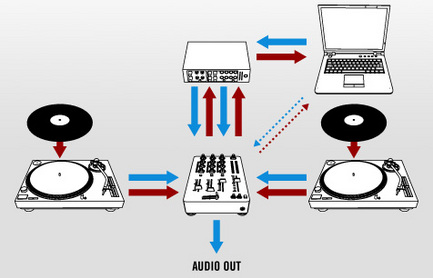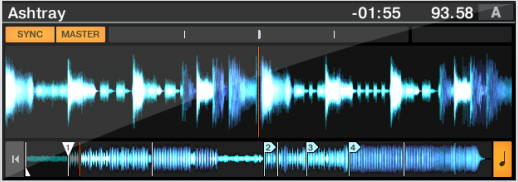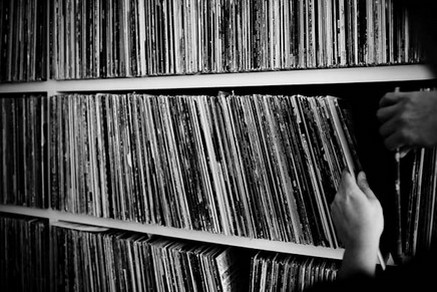|
It's Off Centre's 10th Year and we just wanted to thank everybody who have been with us at any point of our journey. We've seen big changes over the years, but one thing that remains consistent is our dedication to pushing the boundaries of musical expression and education. As soon as we catch a glimpse of creativity in electronic music being exhausted, you guys inspire us with new ideas, stories, and a hunger for creativity. From lovers of Acid-Afro-Prog-Rock, to Progressive-Post-Dub-Jazz enthusiasts, or Deep-Emo-Trap-Funk lovers to Downtempo-Experimental-Electro-Folk!! We've seen it all and have loved every trend setting moment. Our existence thrives on the continuous growth and development of this backwards music industry that has oddly always felt like home. This here is an attempt to celebrate and express gratitude for a unique experience that we've been lucky enough to build from scratch. Thank you for making our 10 years a beautiful experience. The future of music is bright and we look forward to taking your imagination even further Off Centre. NEW BUILDING: 1ST YEAR ANNIVERSARY
May marks the 1 year anniversary of Off Centre's building purchase! Our new home on Coxwell Ave in Leslieville is a beautifully renovated, intimate DJ & Production environment customized for our cutting edge curriculum. The above pics give you a behind the scenes glimpse at the creation of our new space. Hard to believe, but the school was just an idea in 2004 and will come 10 years true in June of next year. With our steady growth and innovation the face and location of Off Centre has changed over the years, but we continue to stay true to our philosophy, solid roots and educational mandate. We run a professional world class facility in which we foster the creative development of every student that walks through the door. To celebrate our 1st year at Coxwell and for your continuing interest and dedication to the school we'd like to thank you by offering 15% off all registrations between April 16th & May 16th, 2013. COME SEE FOR YOURSELF AT OUR OPEN HOUSE Off Centre's open house is a chance for anyone who's thinking about taking courses, or just curious about what we do to come by, meet instructors, check out our space, and find out exactly what program is right for you. We support the exploration of all genres of music within classroom/lab settings. At the end of the day, our purpose is to help our students translate their creative vision into a finished piece of work. You'll have a chance to experience the intimately designed class setting and get a glimpse of what you'll learn face to face with our seasoned team of professionals. Come experience the studio for yourself, free at our Open House and become a part of the Off Centre family. Next Open House Date: Sat. May 4th, 12 - 1:30pm Above is a special iNSiDEaMiND performance appearance at Toronto's monthly eclectic electronic arts happening "Feast in the East" last month (November 2012). Some rare footage capturing a clip from the impressive improvised stylings of the ever evolving turntable duo. From live movie scores, theatre soundtracks, and television recordings to classical music festivals and indie rock concert halls, iNSiDEaMiND continues to stretch the creative limits and conceptual ideas about what can be accomplished with turntables and electronics.
The live show is an increasingly vital element to any musician's career. However, in the current live electronic environment we see automation, syncing and pre-recordings reducing 'in the moment' artistry and the live element can consequently drift to the background. Since today electronic music includes many varieties and ranges from experimental art music to popular forms such as electronic dance music, ideas about what constitutes a successful live show can vary. With powerful software such as Maschine and Ableton studio creation and work flow are improved dramatically, but what happens in the studio doesn't always translate live. And sometimes it's painfully obvious that those coming from a Producer rather than a DJ background lack the necessary live skills. Computers have given us a definite edge in terms of how quickly and easily we can manipulate music, but it's also made it easier to fake live skill. This being said, things seem to have evolved since the early to mid 2000's. It's no longer okay to just show up with your laptop. Audiences aren't going to embrace artists with open arms just because of a solid track selection and/or pre-recording studio skill. This is evidenced by the recent controversy surrounding big name "DJ miming". It's clear that audiences these days are quite a bit more sophisticated and knowledgeable about what is actually happening 'behind the screens'. Having chops on your instrument isn't the only thing that will entertain audiences nor will it guarantee popular success, but whether rock band, jazz singer, or DJ there's always something positive to be said for those that can step to their gear and rock a show in any setting. This ability to play is perhaps the primary characteristic that sets the "electronic musician" apart from the Producer. As electronic music, its sub genres, and audience matures it'll be interesting to see how the reception of the live show (or lack there of) will change. The turntable was never intended to do more than play records. It was artistry, creativity, and imagination fusing with technology that gave birth to an art form. In much the same way the future of live electronic music will be dictated according to these elements.
Steely Chan is the impressive and ambitious remix project of brothers Trevor and Matt Chan who are also both instructors at Off Centre. They're originally from Vancouver but make music in Toronto with the current mandate of posting a new remix every week for free download. They produce, dj, arrange & perform with laptops, turntables & controllers. Drawing from their hip hop background they create anywhere from funk, afrobeat and disco backbeats layered cleverly with a variety of hand picked and manicured vocal selections. Recent mashups include Jurassic 5 & Shawn Lee - World of Lagos, Adele and John Legend - Rolling in the Deep, and of course the remix featured in the above video Cee Lo Green - F*%k You B - Murray Mix. At one remix per week, there's obviously a lot more where this came from. Check the variety of flavours and/or download at your leisure to get some fresh remixes for your next gig http://soundcloud.com/steelychan.
Upcoming Ableton Classes at Off Centre... Over the last 10 years there's been an incredible shift towards designing gear that's not only computer based, but also live performance based. Laptops have no doubt (for better, or for worse) become a standard piece of gear in most electronic musicians' and DJ's live rig, but there's a big difference between what was happening in the early 2000s and what's happening in 2011. Developers are responding to musicians' and audiences' demand for the live element. And this relates to one human sense in particular: Touch. Music is after all a very physical experience. From involuntary physical responses such as sound waves vibrating your ear drums to very intentional reactions like tapping your foot, nodding your head, or full on dancing. Electronic music can be created in hundreds if not thousands of ways...from scrolling your mouse across the screen with a pencil tool, to playing midi instruments with a keyboard, to recording live studio performances and micro editing in a DAW. The possibilities are endless. But with a tool like the MPC and more recently arguably its first worthy adversary Maschine, comes a whole other element of electronic music creation. In the above video we get an up close and personal view at Jeremy Ellis' now staple drum Maschine routine "Unlike Any Other". What we see here is an undeniable musicality and sense of live rhythm. He's a trained pianist and drummer who's been able to successfully translate his traditional musical background into bad ass finger drumming. The ability to convincingly perform live, however, can be done in several ways. Above, Ellis performs an entire routine live without sequencing. Our point here is not necessarily to advocate live drumming as the way to perform, nor is it to suggest that to be successful you must strive to become the next Jeremy Ellis. It's a great goal and a lot of hard work and practice to get there...definitely worth it as you can see. What's more interesting to us though, is Maschine's versatility. It can be used as a live tool (as demonstrated above), but those "in the moment" drum hits can be recorded and sequenced into a more detailed piece behind the scenes in the studio. It's a great alternative for those tired of tediously drawing in drum sounds with your mouse (which can also be fun). With a tool like Maschine you bring in the tactile element full on. Once you have the right sounds, the idea in your head can be immediately be translated into a loop and grown into a multi-layered track. You can also think about the drums pads not just as triggers for individual sounds, but with Maschine you can adjust your settings so that your pads trigger entire loops or "scenes" on the fly as well. Like anything, It takes a little patience to learn how to use Maschine at first, but that initial investment reading manuals, checking youtube videos, or taking lessons pays off quite quickly. Not only in time saved, but potentially also in how your beats sound. The ability to bang out beats with a live feel can more acurately capture the immediate moment of inspiration. Our reaction to music is immediate. Aspects of our creative process should try to mimic that sensation.
In conclusion, it feels as though the gap between electronics and live instruments is narrowing. This is definitely a positive step in a more human direction. In Maschine not only do you have a live tool, but also a full arranging, sequencing, sampling, and studio recording tool that allows you to explore a variety of composition techniques and approaches. And it's fun. Upcoming Maschine Course at Off Centre... Ever since the abacus first clashed with the calculator, the epic battle between analog and digital has raged on with hardcore fanatics from both camps ready to tell anyone who is listening exactly why the other side is wrong. From cds to midi controllers, there is an entire universe of digital djing out there, but today we are going to specifically look at DVS (Digital Vinyl System) vinyl time code as compared to its traditional analog record counterpart, and the benefits and disadvantages of time code djing. Whether or not you have had experience with traditional vinyl, or not, the primary reason for investing in a DVS is to get that traditional vinyl feel. So is it the same? Is it superior? There are a few criteria that come to mind: FunctionalityHow different is using time code vinyl compared to traditional vinyl? Not much really. Once you connect the usb interface to your mixer and turntables it’s all essentially the same. The time code sits on the platter. The needle goes in the groove. You can operate the gain, eq, and all the faders on the mixer the same. Monitoring the audio signal is the same, as well as back cueing, adjusting the pitch slider, and beat matching your next track can all be done in the traditional way, as well as being controlled by the software, if you choose. One of the biggest functional advantages of software djing is portability. Being able to carry every record, you own in a laptop slung over your shoulder in a small bag with two time code records, and a few small pieces of equipment. But what does it take to get them in there? Nowadays there are a number of websites dedicated to selling high quality downloadable tracks, specifically for use by djs, and of course ripping a cd to a computer is child’s play, but getting those 12” promos archived, yet still retaining their fidelity is a little trickier. The soundcard/interfaces required for all DVS’s include built in preamps, and some of the software have a recording function, so the process is fairly easy, it is the result of the process that leaves much to be desired. Because it is a digital reproduction of the sound, it will never retain the quality of the traditional analog record. Which brings me to my next point… Sound Quality The true test of sound quality is in the variation of the tempo/pitch of the audio. Now with traditional vinyl you can speed it up, slow it down, wind it down, break it, scratch it fast, scratch it slow, and will always retain that warm rich analog sound with no degradation of the sound. Because digital files are a non-continuous recreation of sound, the more you manipulate the sound, the more obvious the flaws are. Think of a picture on a TV, the image you see is not a complete image, it is made up of hundreds of individual pixels, that all do their little part to form an image. Digital audio files act in the same way; they are a series of sound pixels, if you will that each represent a micro-portion of sound. So what that means is the more you reduce the tempo/pitch of an audio file, the more detached the pixels become from one another, the more prominent the individual pixels become, creating a lo-fi granulated sound. Because of this, breaking, slow scratching, drastically, and sometimes even gradually lowering the tempo/pitch, will never compare to traditional analog vinyl. Now operating at faster speeds is a little different. Because the speed of the audio file is forcing the pixels closer together, as opposed to spreading them out, the sound will maintain its integrity, to a point. Scratching and play through at 0 to +10% tempo/pitch, with a DVS, is virtually identical audibly to its traditional counterpart; (depending on the quality of the audio file being used) it’s when we raise the tempo/pitch of the track that we begin to notice its fallibility. I have some audio files ripped from vinyls that begin to fail at less than a 5% raise in the tempo/pitch. The highs start to become strained, and the lows become garbled and muddy sounding. In some cases it starts to sound like a whole other song, and not in a good way. And scratching at an extremely high pitch just doesn’t sound right. It is almost like the faster the track gets, the closer the pixels get, almost to the point where they sound like they are overlapping each other. In this category, analog wins every time. VersatilityAges ago when I first started to play with wax, and the place where you would most likely find me was at the record store spending my last dollars on the latest release from Rawkus Records, I used to dream the improbable dream, of being able to create my own records with the sounds I want on them. Being able to scratch sounds from movies, TV, remarks from a borderline racist neighbour. Well it is all possible now. Using a DAW, or recording straight to the software, bringing your sounds, your remixes, and even your own original music, into the mix is fun, easy, and seamless. And on the subject of seamless, looping beat matching, instant cueing, bringing up your next track, adding effects, can all be done at the touch of a button. Some hardcore vinyl enthusiasts may say that that is cheating, but the audience doesn’t care how you get the sound out, they only care if it sounds good. And taking the time and labour out of beat matching really frees you up to be more creative with your mixes. One other thing I really enjoyed about using a DVS, is switching back and forth from time code to traditional vinyl is as easy as flipping the input switch on the mixer. ArtMusic is art. Turntablism is art. Djing is art. So is digital Djing less than art? Is a book written on a laptop less than a book typed on a typewriter? Is a picture designed on a computer less than a picture drawn with pencil or painted with water colours? I don’t know. It’s my opinion that digital djing is a new art form, using technology to give your listeners an experience that you couldn’t give them the traditional way. Being able to remix spontaneously, layer effects, loop, and re-loop, scratch your own voice, play your own music, instantly mixing on four decks. The possibilities are endless. And if you are doing what
you love to do, if you are creating something totally unique from everyone else, if you are making people happy, if you are making people angry, then that’s art, and nobody can take that away from you. And The Winner Is….. You! Why take sides, embrace technology. Meld the old with the new. They both have their pros and cons, so use one to balance out the other. Why limit yourself to one genre, one colour, or one format. Once we abandon our preconceived notions, there is a world of opportunities out there, new buttons to press and different knobs to turn. And when we can finally recognize the other side for the attributes that it brings to the table, the world of Djing will be a better place. - Zeke Zelecta |





 RSS Feed
RSS Feed
